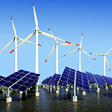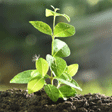- Home >
- Our Actions >
- Ambassador report
3
Comments
Harnessing 3D Technology to Combat Plastic Pollution in Mombasa: Creating 3D Printing Filaments out of Plastics |
|---|
|
by Dafford Owino | 30-05-2023 19:49
|
|
Plastic pollution has become a global environmental crisis, posing significant threats to marine ecosystems and human health. Mombasa, a vibrant coastal city in Kenya, has not been immune to this issue. However, amidst this challenge, innovative solutions are emerging, and one such solution is the utilization of 3D technology. In this article, we explore how I have in Mombasa leveraged on 3D technology to combat plastic pollution, specifically by creating 3D printing filaments out of plastics. Understanding Plastic Pollution in Mombasa: Mombasa, being a coastal city, faces the brunt of plastic pollution due to its proximity to the Indian Ocean. Plastic waste generated from households, industries, and tourism often finds its way into the waterways and eventually the ocean. The detrimental effects of plastic pollution on marine life, ecosystems, and the economy cannot be ignored. However, there is hope on the horizon through the innovative use of 3D technology. The Role of 3D Printing Filaments: 3D printing, also known as additive manufacturing, is a process of creating three-dimensional objects by layering materials on top of each other. The primary material used in 3D printing is called a filament. Traditionally, filaments have been made from various materials like PLA (polylactic acid), ABS (acrylonitrile butadiene styrene), or nylon. However, innovators like me in Mombasa are now using plastic waste as a resource to produce filaments. Creating 3D Printing Filaments from Plastics: The process of creating 3D printing filaments from plastics involves several steps:
Benefits of Using 3D Printing Filaments from Plastics: The utilization of 3D printing filaments made from plastics offers several advantages:
Conclusion: The deployment of 3D technology to combat plastic pollution in Mombasa demonstrates the power of innovation and collaboration in tackling environmental issues. By transforming plastic waste into 3D printing filaments, individuals and organizations are making a positive impact on the local ecosystem, economy, and community. This initiative serves as an inspiration for other regions to explore similar solutions, promoting a sustainable and cleaner future. |
 
|
|
|










 Previous : May Free Report Overpopulation...
Previous : May Free Report Overpopulation...









3 Comments
Hello Dafford!! This is your mentor James.
First of all, congratulations with all your achievement!
I can't emphasize enough the significance of your current project! Reusing plastic waste as the main ingredient for 3D printing is both environmentally and economically beneficial to the society. Not only does it reduce the rate of accumulation of plastic waste in the ocean and landfills, but also it propels the production of useful plastic products that can be utilized in various industries. If proper retrieval of those 3D-printed plastic products is ensured, the sorting procedure may even be eliminated in the future!
Thanks for writing such a meaningful report! Great work.
Posted 24-06-2023 13:33
Hello Dafford! This is your mentor Yewon.
What an interesting topic! 3D printing is one of the famous technologies, and I haven't heard before that 3D printing filaments are plastic, so it was so interesting!
Especially you have introduced specific steps and benefits, which was very informative!
Thank you for your great report!
Posted 04-06-2023 12:15
Great Dafford ! Congrats.
I have a friend that lead such project here in Togo too. Personnaly I'll be glad to connect with you. Congrats !
Posted 31-05-2023 12:23